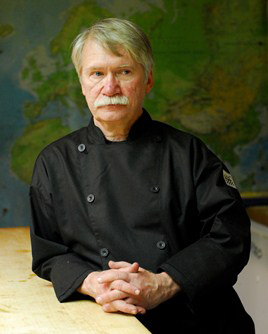Mayo’s Clinic: Structured Observations as a Learning Activity
Wednesday, 25 March 2015 03:00
 Many students are not used to conducing structured observations and might not know what to look for and how often to record behaviors. The more explicit you are about how they should conduct the observation, the more likely it will be an effective learning experience.
Many students are not used to conducing structured observations and might not know what to look for and how often to record behaviors. The more explicit you are about how they should conduct the observation, the more likely it will be an effective learning experience.
By Dr. Fred Mayo, CHE, CHT
Last month, we discussed the art of using interviews as an out-of-class activity, and this month we will examine using structured observations as an outside-the-classroom activity, as well.
Good chef-instructors provide carefully developed demonstrations of everything from culinary fundamentals to complex technical skills. While these in-class activities are valuable—even essential—to a good culinary education, there are a range of ways to learn from observation.
Reasons for Using Observations
Encouraging students to learn from watching demonstrations and observing professionals has been part of the hospitality industry for decades, if not centuries. In the culinary arts, students learn a great deal from observing chefs in action and noticing the way in which they practice their particular skills. There is also magic in demonstrations set up on the spot to teach something that students clearly have not learned and need to review. However, demonstrations outside of class have value, too.

 On a recent trip to Hawaii, Chef Weiner had an epiphany: Teaching our students how to cook isn’t good enough. To better prepare them for the real world, we also need to introduce students to the different formats of serving. Here are 10 effective ideas that fit nicely within a shorter class timeframe.
On a recent trip to Hawaii, Chef Weiner had an epiphany: Teaching our students how to cook isn’t good enough. To better prepare them for the real world, we also need to introduce students to the different formats of serving. Here are 10 effective ideas that fit nicely within a shorter class timeframe. As their career paths become clear, students will inevitably emulate what they’ve experienced in our classrooms and kitchens. Thus, our responsibility is great. Which attitudes, aptitudes and beliefs do we want graduates to portray throughout their careers as a result of our actions?
As their career paths become clear, students will inevitably emulate what they’ve experienced in our classrooms and kitchens. Thus, our responsibility is great. Which attitudes, aptitudes and beliefs do we want graduates to portray throughout their careers as a result of our actions? Here’s a valuable education-resources fact sheet to help educators effectively teach seafood sustainability.
Here’s a valuable education-resources fact sheet to help educators effectively teach seafood sustainability. Top chefs know that exceptional produce is where flavor begins. More produce choices equates to more chances to shine. That’s why citrus is something to celebrate.
Top chefs know that exceptional produce is where flavor begins. More produce choices equates to more chances to shine. That’s why citrus is something to celebrate.